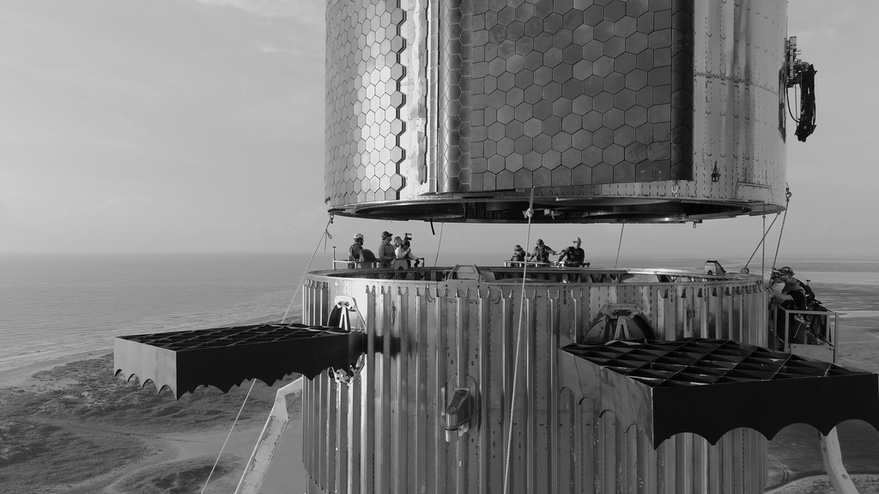LAS VEGAS — SpaceX Chief Executive Elon Musk said he expects this first orbital flight of his company’s Starship vehicle to take place as soon as January, pending regulatory approvals.
Musk, speaking at a joint meeting of the National Academies’ Space Studies Board and Board on Physics and Astronomy Nov. 17, said the company was in the final preparations of both the vehicle and its launch site in Boca Chica, Texas, ahead of a campaign of as many as a dozen test flights in 2022.
“We’re close to our initial orbital launch,” he said. “The first orbital flight we’re hoping to do in January.” Later in the discussion, he revised that, saying that flight would take place “in January or perhaps February.”
That flight, as outlined in regulatory filings, would place the Starship in orbit, but the vehicle would complete less than one orbit before reentering and splashing down in the Pacific Ocean about 100 kilometers the Hawaiian island of Kauai. Both the Starship vehicle and its Super Heavy booster are now complete, he said, and the launch pad and tower should be complete this month. A “bunch of tests” will follow in December.
“There’s a lot of risk associated with this first launch, so I would not say that it is likely to be successful, but I think we’ll make a lot of progress,” he said. Later, he said he wasn’t sure Starship would reach orbit on its first flight, “but I’m confident we’ll get there next year, and we intend to have a high flight rate next year.”
Musk later estimated SpaceX would attempt a dozen Starship launches next year, and possibly more. “The engine build rate is currently the biggest constraint on how many vehicles we can make,” he said, given that Super Heavy requires 29 Raptor engines currently, and later 33, along with six on Starship. The company is building a new factory in Texas for high-volume production of Raptor.
If SpaceX is successful to recover and reuse Starship during those test flights, operational missions could begin in 2023. “We intend to complete the test flight program next year, which means that it’s probably ready for valuable payloads — not for testing, basically, but actual real payloads — in 2023. So quite soon.”
That schedule, though, depends on winning regulatory approval from the Federal Aviation Administration. “We’re expecting our license approval from the FAA around the end of this year,” Musk said.
The FAA has yet to complete the environmental review needed for Starship launches. The FAA said Nov. 15 that it was evaluating more than 17,000 written comments and 121 oral comments from two public hearings. A “permitting dashboard” by the Department of Transportation anticipates completing the environmental review by the end of December, which would then allow the FAA to proceed with issuing a license.
However, that environmental review process could also conclude that additional work, including a full-scaled environmental impact assessment, is required. That would delay a license for Starship launches by months, if not years.
Musk, scheduled to appear at the virtual meeting for a half-hour, spent more than an hour, answering questions from board members on a wide range of topics, from SpaceX’s choice of stainless steel for Starship to threats facing human civilization.
“This is a very profound vehicle,” he said of Starship. “Nothing really like it is being developed, and I don’t think anything quite like it has been even proposed. But it has the potential to affect human destiny in a very profound way.”
